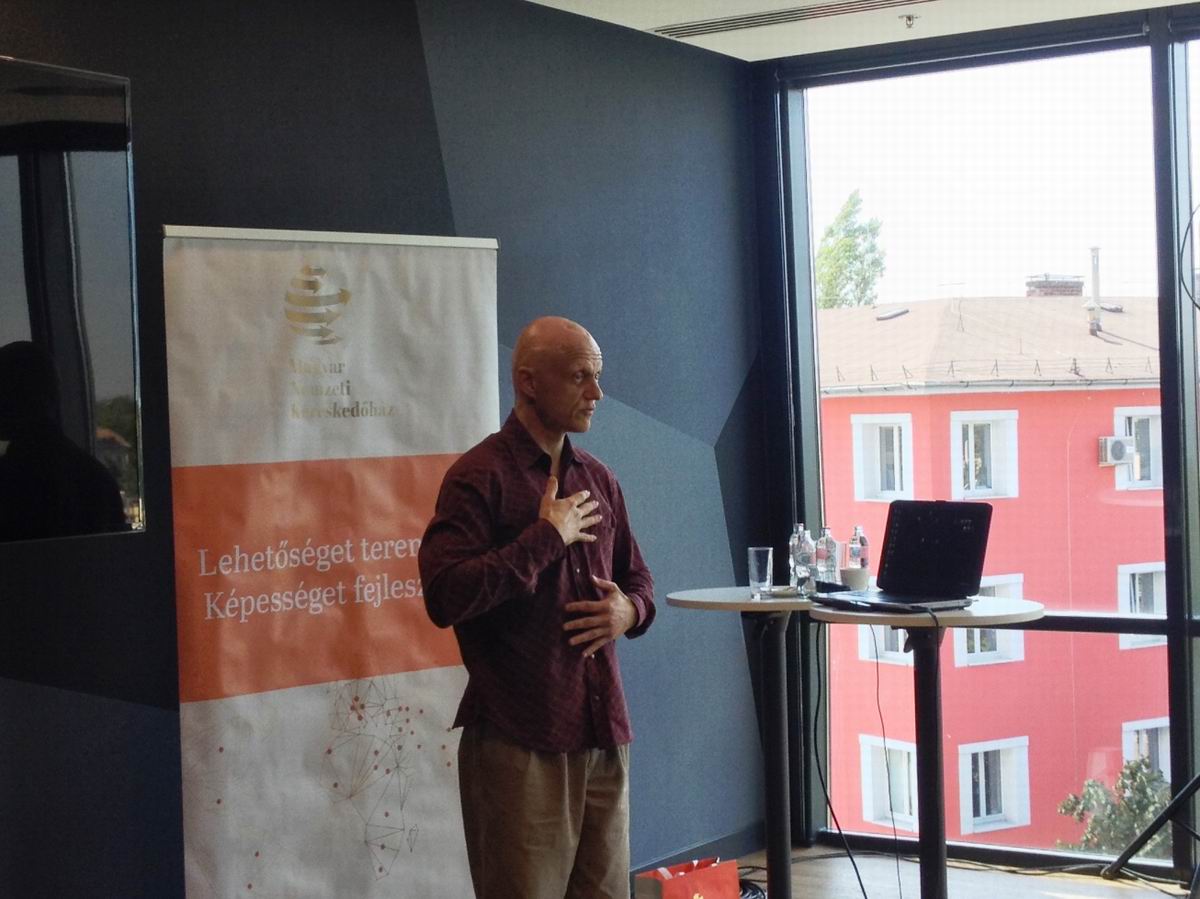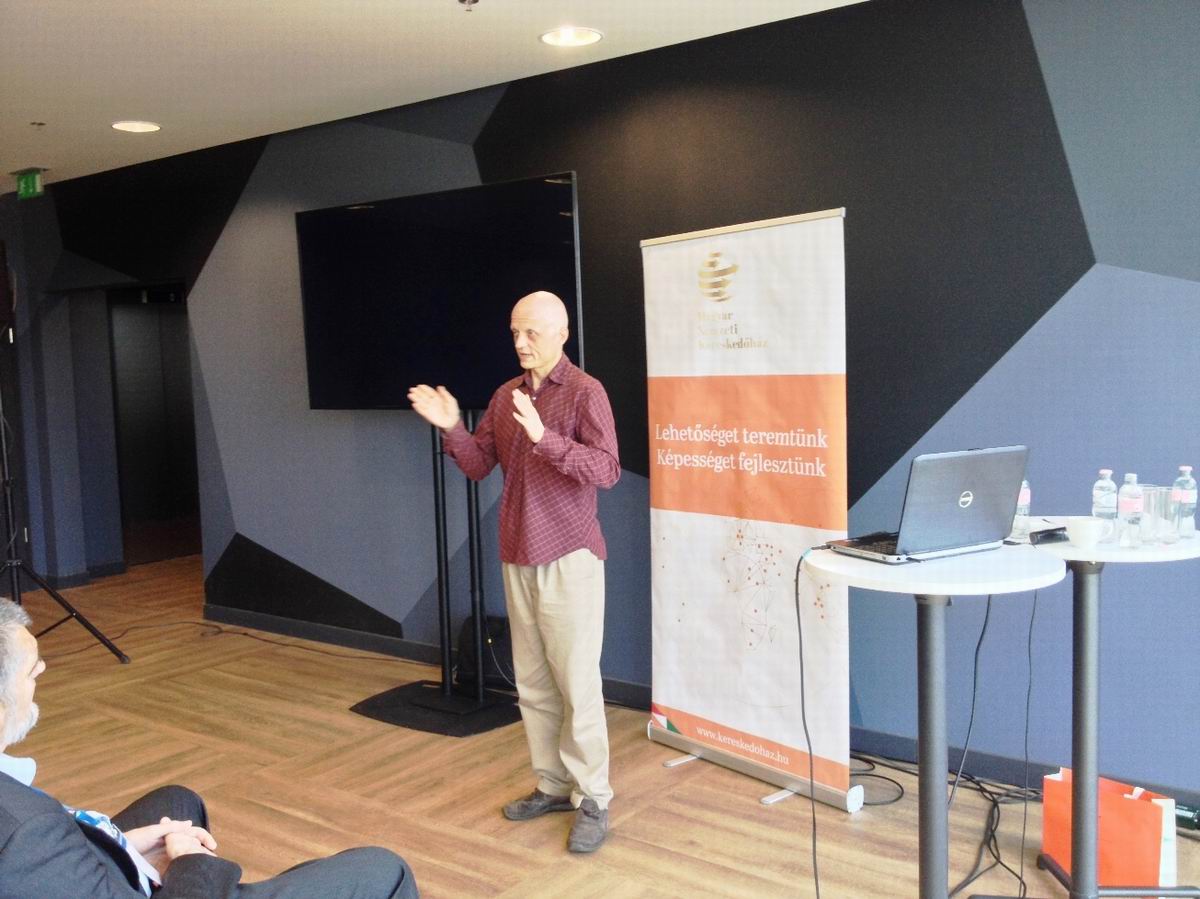Lecture on Yogic Breath Techniques at International Conference, Budapest, Hungary, 19 May 2017
At the Sport and Innovation International Conference 2017, initiated and organized by the University of Physical Education in Budapest, Hungary, senior YIDL Teacher, Tyagpuri (Tibor Kökény), gave a lecture on the topic of 'Yogic breath techniques as the possible means of enhancing athletes' efficiency in concentration, regeneration and stress management'.
At the Sport and Innovation International Conference 2017, initiated and organized by the University of Physical Education in Budapest, Hungary, senior YIDL Teacher, Tyagpuri (Tibor Kökény), gave a lecture on the topic of 'Yogic breath techniques as the possible means of enhancing athletes' efficiency in concentration, regeneration and stress management'.
A scientific abstract of the lecture:
Breath flows cyclically through four phases. The new understanding of the breath is supported by the model that depicts the changes of the four phases of breath that can bring athletes towards both activity and relaxation. Physiological parameters can go in two directions, one aims towards the central nerve system (CNS), the other to the peripheral nervous system. For the first type, you can enhance oxygenation via the increase of the amplitude and the frequency. The increased amplitude and the decreased frequency can pull the homeostasis towards a hypoxic-hypercapnic state that can be compared to the EPO-like increase of vascularization and increase of the level of hemoglobin (HB). The other direction is towards CNS when an increase in relaxation is the goal, which can be reached by setting the ratio of inhalation and exhalation.
The processes mentioned above are effective tools for natural enhancement of achievement that are comparable competitors to the prohibited EPO and other blood doping methods. With their help, you can reach even more than a 10% increase in the level of HB, which can be utilized as the substitution of high altitude training at sea level. The use of proper breath techniques can also result in the prevention of acidification, and the enhancement of regeneration.
The next important effect of the use of breath techniques is the influence on the direction of concentration. The direction of the attention in or out, and the types of diffused or focused attention, can help to change the functions of the brain hemispheres in such a way that supports the sports-specific better orientation of space or a concrete object. Conscious breath techniques can help to change the monitoring of your own sports movements, or the movements of the opponent during a competition. Apart from these psychological specifications, concentration is supported by the extra intake of oxygen while facilitating the metabolism of the CNS.
Those athletes can utilize the effects of the results mentioned above, who regularly practice the breath techniques and who are able to fit these techniques into their own system of training - to use them with their regenerating stretches, or even during training and competitions. Several top level athletes verify with their results that the untapped methods of yogic breath techniques have their place in sports, both in Olympic and World Championships.
Keywords: breath, physiology, relaxation and breath, activation and breath, optimizing of concentration, blood doping

